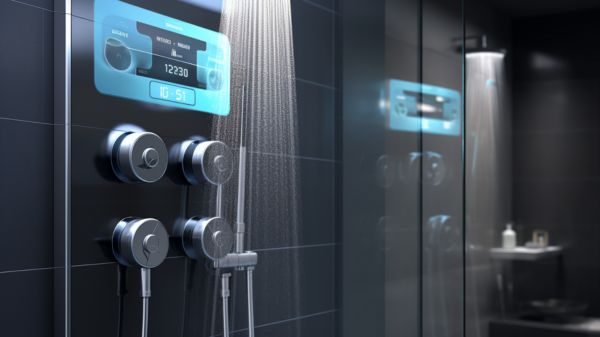Are your energy bills draining your bank account? Well, we’ve got some game-changing solutions for you! In this article, we’ll reveal revolutionary techniques that will reduce your energy costs. We’ve gathered the most effective methods and innovative ideas from experts in the field.
From thermostat programming to window sealing, we’ll guide you through practical approaches that actually work. Get ready to take control of your energy consumption and say goodbye to those sky-high bills!
Thermostat Programming Tools
Using thermostat programming tools is an effective way to reduce your energy costs.
Smart thermostats offer a range of benefits, including programming techniques for energy efficiency. These advanced devices allow you to set schedules for heating and cooling based on your daily routine.
By programming your thermostat to lower the temperature when you’re away or asleep, you can save significant energy and money. Additionally, smart thermostats can learn your preferences over time and adjust accordingly, optimizing energy usage without sacrificing comfort.
With their intuitive interfaces and modern features, these devices make energy savings easier than ever.
Utilizing Blinds for Sunlight Control
We continue our exploration of energy-saving techniques by maximizing the use of blinds for controlling sunlight. Utilizing blinds not only enhances the aesthetic appeal of your space but also plays a crucial role in reducing your energy bills. Here are four benefits of using smart blinds for energy efficiency:
- Optimal sunlight control: Smart blinds allow you to adjust the amount of natural sunlight entering your space, which directly impacts your energy consumption. By strategically positioning your blinds, you can minimize the need for artificial lighting during the day, leading to significant energy savings.
- Temperature regulation: Sunlight can contribute to heat gain, especially during hot summer months. By using blinds to block or filter sunlight, you can keep your space cooler and reduce the reliance on air conditioning, thus saving on energy costs.
- Protection against UV rays: Smart blinds can also protect your furniture, flooring, and artwork from fading due to harmful ultraviolet (UV) rays. By preventing excessive sunlight exposure, you can extend the lifespan of your belongings and avoid costly replacements.
- Privacy and comfort: Blinds offer an easy way to maintain privacy while still allowing natural light to enter your space. With the ability to adjust the angle or height of the blinds, you can control both privacy and comfort levels throughout the day.
Incorporating smart blinds into your energy-saving strategy can have a significant impact on your energy consumption and overall comfort. By harnessing the power of natural sunlight, you can enjoy both savings and a well-lit space.
Opening Windows for Natural Temperature Regulation
We frequently open windows to naturally regulate temperatures and minimize energy consumption. This practice, known as natural ventilation, offers several benefits.
Firstly, it allows for the exchange of stale indoor air with fresh outdoor air, improving indoor air quality. Secondly, it helps to remove odors, pollutants, and excess moisture from the living space.
Additionally, natural ventilation can effectively cool down a room by creating a cross ventilation effect. By opening windows on opposite sides of the room, fresh air can enter, while warm air is pushed out. This method is particularly effective in areas with a breeze or wind.
Reducing Electronic Device Usage
To effectively reduce your energy consumption, it’s essential to limit the usage of electronic devices. Here are some strategies to help you achieve this goal:
- Incentivizing energy efficient appliance upgrades: Consider upgrading your old appliances to more energy-efficient models. Not only will this reduce your energy usage, but it may also save you money in the long run.
- Implementing smart power strips: Smart power strips are a great way to minimize energy waste. These strips automatically turn off power to idle devices, preventing them from consuming unnecessary electricity.
- Creating device-free zones: Designate certain areas in your home as device-free zones, such as bedrooms or dining areas. This encourages social interaction and reduces the temptation to use electronic devices unnecessarily.
- Setting device usage limits: Establish specific time limits for using electronic devices. This not only helps reduce energy consumption but also encourages healthier habits and more balanced lifestyles.
Sealing and Insulating Windows
Sealing and insulating windows significantly reduces energy loss. When windows aren’t properly sealed, air can escape or enter, causing drafts and increasing energy consumption. By insulating windows, you can prevent heat transfer, keeping your home comfortable and reducing the need for heating or cooling.
There are several benefits to window insulation. Firstly, it helps to maintain a consistent indoor temperature, reducing the strain on your HVAC system. Secondly, it can block out unwanted noise, creating a more peaceful environment. Lastly, it can improve the overall energy efficiency of your home, leading to cost savings in the long run.
To achieve optimal energy efficiency, consider energy-efficient window options such as double-pane windows or low-emissivity coatings. These options can help to minimize heat transfer and maximize energy savings.
Innovations in Energy-Saving Techniques
When it comes to reducing energy consumption and cutting down on utility costs, innovative techniques have emerged to provide homeowners with effective solutions. Here are some creative energy-saving methods that can help you save money and reduce your environmental impact:
- Passive heating methods: Instead of relying solely on traditional heating systems, some homeowners have found clever ways to harness solar energy for heating purposes. For example, they use glass bottles filled with water to capture and store heat from the sun, creating a passive heating system.
- Sunlight conversion: Another inventive approach is using special materials that can convert sunlight into usable energy. These materials, such as solar panels or solar windows, can generate electricity or heat water, reducing the need for traditional energy sources.
- Energy-generating devices: Some homeowners have taken a more hands-on approach by using energy-generating devices, such as kinetic tiles or bicycle generators. These devices allow you to produce electricity while performing everyday activities like walking or cycling.
- Smart home technology: The rise of smart home technology has opened up new possibilities for energy savings. By integrating smart thermostats, lighting controls, and energy monitoring systems, homeowners can optimize their energy usage and reduce waste.
While these innovative methods may not be suitable for every home, they demonstrate the creativity and resourcefulness of homeowners in finding new ways to save energy. It’s important to remember that practical approaches like thermostat programming and window insulation remain effective and accessible options for energy savings.
Continuous innovation in energy-saving techniques is necessary to adapt to changing energy needs and technologies.
Best Practices for Heating and Cooling Energy Savings
When it comes to reducing energy consumption during winter, the most effective method is sealing and insulating windows. Using rubber inserts, coatings, and heavy drapes can help prevent energy loss and reduce spending on heating. This approach was identified through a study that analyzed actual energy usage in households.
On the other hand, when it comes to cooling, using window shades is the best practice for reducing energy expenses. Window shades help block sunlight and keep the interior cool, particularly in warmer temperatures when air conditioners are used. This approach offers substantial savings in energy consumption during cooling seasons.
Conclusion
By implementing these revolutionary techniques, you can reduce your energy costs and achieve substantial savings on your bills.
Did you know that according to a study by the U.S. Department of Energy, sealing and insulating windows can reduce energy consumption by up to 20%? This statistic highlights the significant impact that simple steps like window insulation can have on reducing energy costs.
Start revolutionizing your energy consumption today and watch your bills decrease.




